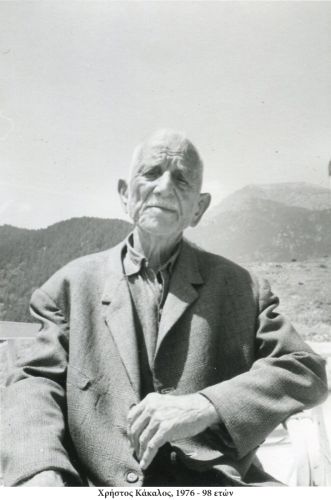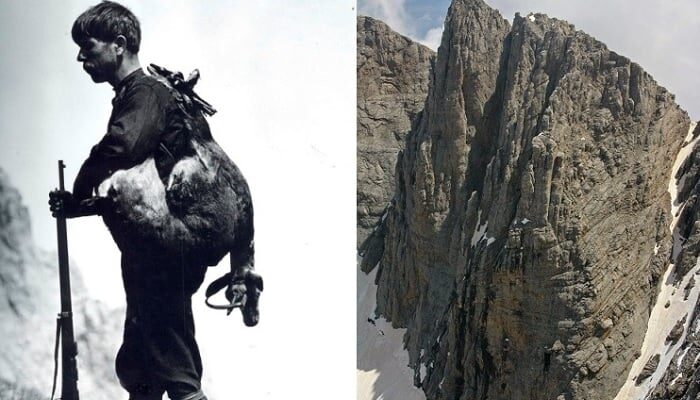In August 1913, the first climbers reached Mount Olympus’s highest peak, famed for its place in Greek mythology as home of the Twelve Olympian gods.
Since that date, it is thought that approximately ten thousand climbers visit the 2,917-meter (9570-foot) high mountain each year. It is the highest mountain in Greece and the second highest in the Balkan peninsula.
Most of the climbers today, however, don’t venture all the way to the summit, called Mytikas. However, on August 2, 1913, a Greek man, Christos Kakkalos, led two Swiss adventurers to conquering Mount Olympus—all the way to the top.
According to the official website of the Hellenic Federation of Mountaineering & Climbing in July 1913, the Swiss man, Frederic Boissonnas (1858-1946), who was a photographer and publisher, and Daniel Baud-Bovy (1870-1958), decided to explore Mt. Olympus in hopes of fulfilling a dream of theirs.

Swiss explorers’ dream to reach the top of Olympus
The two Swiss mountaineers arrived by boat to Litochoro from Thessaloniki and hired Christos Kakalos (1882-1976), a wild goat hunter, to be their guide. On the following day, they set off for St. Dionysios Monastery, where they arrived at noon. That same day, they followed the old path uphill north of the monastery and set camp in Petrostrouga.
On July 30th, after leaving Petrostrouga and its burned forest, they climbed up towards Skourta, and, after having crossed the “saddle,” they reached the edge of the current Plateau of the Muses. They immediately named this the Meadow of the Gods.
They then climbed up to the summit of Prophet Elias and explored the base of Mt. Stefani. They named Stefani the Throne of Zeus while Skolio was unusually name ‘Black Top.’ This was because at that time the side facing ‘Megala Kazania’ (‘Big Cauldrons’) was very dark.
From the plateau, they climbed down steep scree, and, in two hours, they reached the edge of the forest. There was a hut there used by woodcutters. At this point, there was is now a small clearing north of the refuge Spilios Dear which functions as a heliport. In the hut, they finally saw the path that they would take to the top of Mount Olympus.
On July 31st, while the team had decided to return to Litochoro, they changed their minds in the vicinity of the monastery and attempted to climb the highest, unconquered summit of Mount Olympus. They hence returned to Prionia, where they faced a terrible storm. The following day, although quite tired, they climbed up Mavrolongos and, in the afternoon, reached the previously mentioned hut where they stayed overnight.
Before dawn, they set off in rather extreme weather conditions with severe fog, hail, and strong winds. After a laborious ascent through small gullies, scree and steep, and slippery rocks, they reached a narrow ridge. From the description, it seems they climbed up straight from Zonaria.
They climbed in the mist, with Christos Kakkalos leading the climb—barefoot—followed by the two Swiss, tied with a rope.
They eventually reached a slender eroded peak which they named Victory Top (in honor of the victory of the Greek troops at Sarantaporo), thinking it was the highest peak of Mount Olympus. The Swiss climbers wrote a few words about the climb on a small card, put it in a bottle, and carefully placed it under a pile of stones to protect it.
The bottle was found fourteen years later and was sent to Switzerland, but, today, it is exhibited in the Hellenic Federation of Mountaineering and Climbing’s Museum (E.O.O.A-HFMC) in Athens.
However, when the sky cleared up for a while, they saw another even more impressive peak above the place where they were standing and realized they had made a mistake. Beyond frustrated, they climbed down from the craggy peak they then called Tarpiia Stone. However, as Boissonnas later wrote, in the heart of every mortal, there is a spark of Prometheus’ fire.
Kakkalos with his head lowered, was silently climbing down the steep ridge. Then, he stopped. Before him lay the “vertical couloir” leading to the highest peak. “Shall we go up?” he asked. The two Swiss climbers nodded.
Kakkalos becomes an official guide
It was the secret decision the three of them had come to earlier, each one for himself without exchanging a word. They shared the same thoughts and feelings.
Without uttering a word, Kakkalos left this photography equipment at the base of the couloir and scrambled up decisively through smooth, slippery rocks, followed by the two Swiss men. Soon, he had reached the top—the fabled top of Mount Olympus, the dwelling place of the gods.
Hence, on August 2, 1913 (the Swiss already used the same calendar), at 1:25 AM, the group conquered the highest peak in Greece, the untrodden summit of Mount Olympus.
Kakkalos later became the first official guide of Mount Olympus; he last climbed the highest peak, Mytikas, in 1972.




